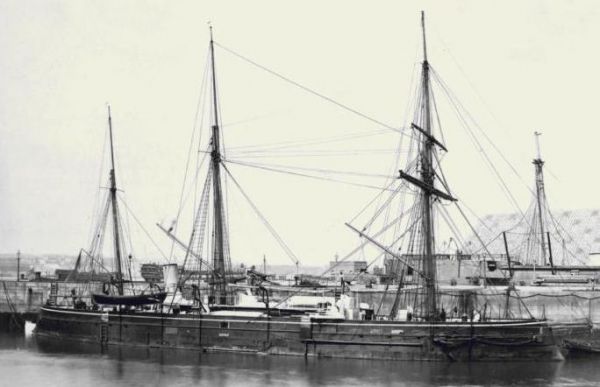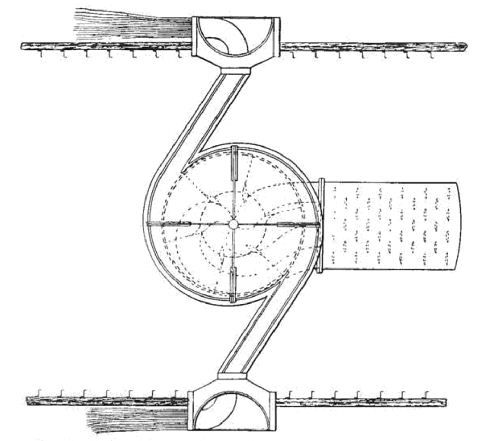
HMS Waterwitch
During
the 1860s, the Royal Navy experimented with new types of warships to
replace the aging generation of screw-propelled steamships. Among them
was the 1,160-ton
HMS Waterwitch. This ship used a novel form of propulsion: water jets.
This
system was known as the Ruthven impeller--a water turbine invented by
Scottish engineer Morris West Ruthven. The impeller measured 14.5 feet
across and weighed 8 tons. It rotated on a vertical axis inside a
chamber 19 feet across. Two water jet nozzles opening just below the
waterline fed water into the chamber. Two 160-horsepower steam engines
powered the pumps which sucked water through the nozzles and into the
impeller chamber.

The water turbine on the Waterwitch
Because of its design, the Waterwitch
could theoretically move forward or reverse at equal speed simply by
reversing the jets. There was a rudder at the bow as well at the stern,
so it could also control its movement in reverse. This could be helpful
when attempting to ram an enemy ship, so the Waterwitch was equipped
with armored rams at both ends.
The Waterwitch
engaged in sea trials in 1867. Unfortunately, it proved to be slow and
could reach a speed of only 9.23 knots. In reverse, it could move 7.9
knots, which was not bad, but did not live up to expectations. The Waterwitch also proved to be difficult to maneuver.
A Royal Navy panel assembled to examine the
Waterwitch concluded
that the design was a failure because it was difficult to draw water
into the inlet of the pump and the water that was taken on board
increased the weight of the ship. Also, the system experienced power
losses due to bends in the water passages and friction from the water
going through those passages.
Naval architect Albert E. Seaton
argues that the
Waterwitch
might have moved faster if it had heavier boilers, larger water
passages and a bigger chamber for the impeller. But this, of course,
would have made the ship heavier.
Consequently, the Waterwitch’s innovations were not put to broader use. The ship was struck in 1887 and scrapped in 1890.



No comments:
Post a Comment